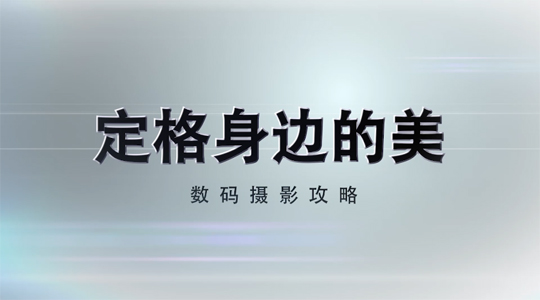
当前课程知识点:Introduction of New Structural Regional Economics > Final Examination > Final examination > Course Introduction
返回《Introduction of New Structural Regional Economics》慕课在线视频课程列表
返回《Introduction of New Structural Regional Economics》慕课在线视频列表
大家好
欢迎大家学习新结构区域经济学导论
这门课由
南昌大学经济管理学院
与北京大学新结构经济学研究院合作
我是课程负责人李汝资
任教于中国江西省南昌大学经管学院
任教于中国江西省南昌大学经管学院
我的研究领域主要涵盖
新结构区域经济学和可持续发展目标这2个板块
如果你在学习过程中有任何疑问
欢迎你通过邮件与我交流
那么,在本节课中
我会首先带各位了解
新结构区域经济学框架
提供一些参考书目
并介绍一下我们的授课团队
好,那就让我们开始吧
首先
让我来给各位介绍一下
新结构区域经济学导论的主要内容
这门课是基于丰富的
中国区域经济发展案例
充分展示中国在区域发展
与治理方面的经验与智慧
尤其是改革开放以来
中国发挥区域资源禀赋
促进区域产业结构转型升级
促进区域产业结构转型升级
为世界其他发展中国家经济赶超
提供了宝贵经验
也为新结构区域经济学的形成
奠定了坚实基础
这个课程主要包含以下七个章节
第一章,是新结构区域经济学的起源
主要是从中国经济发展概览的角度
主要是从中国经济发展概览的角度
梳理新结构区域经济学的发展过程
众所周知
不同国家和地区之间
在资源禀赋上往往有着明显的不同
在中国国内,更是如此
面对如此巨大的地区间资源禀赋差异
中国又是如何在改革开放之后
取得举世瞩目的经济发展呢
实际上,无论从理论,还是实践角度而言
新结构区域经济学的诞生
都与中国和世界上其他发展中国家的发展道路密不可分
第二章是一些区域发展方面的经典理论
比如,增长极理论,点轴理论
中心-外围理论等等。通过学习这些理论
会帮助我们进一步培养对区域问题思考的直觉思维
第三章是新结构经济学的导览
事实上,新结构区域经济学
就是在新结构经济学的基础上发展起来的
这一章会关注
新结构经济学的理论和假设
对我们在禀赋结构
和产业结构变迁方面的理论理解
颇有益处
第四章则是介绍新结构区域经济学的五大原则
比如区域外部性,禀赋结构转换
这些原则是大家使用新结构区域经济学理论
分析区域问题时的重要基础
第五章将为大家展示如何在发展中经济体
实践新结构区域经济学
纵观全球
新结构区域经济学引导了
不少发展中国家进行赶超
比如埃塞俄比亚和其他非洲国家
以及乌兹别克斯坦等中亚国家
第六章是中国国内运用新结构区域经济学的实例介绍
正如之前所说
新结构区域经济学源自于
中国改革开放之后的经济发展
因此,我们有非常多的实践经验可以分享
比如脱贫治贫管理
中国县域发展战略等
最后一部分是中国经济发展成就的展示
中国的经济社会发展成就
很好地反映了新结构区域经济学
在区域发展中的政策引导作用
例如,精准扶贫
长江经济带等等
这节课会促进我们更好地理解
中国如何基于其自身的禀赋结构
制定区域区域发展战略
好的,那么以上就是新结构区域
经济学导论的大纲
那么要想学习好本门课程
需要去阅读一些
参考书目
这些参考书目主要分为两类
一部分是与新结构经济学相关的参考书
另外是与经济地理学
以及空间经济学、区域科学等相关的参考书
新结构经济学相关的参考书
比如林毅夫教授撰写的解读中国经济
新结构经济学
理论框架和政策
产业政策的演化
中国奇迹
这些著作可以帮助你认识新结构经济学
另外是与经济地理学相关书籍
比如经济地理学手册,空间经济学
地理经济学导论等
通过教材这样提前的了解和学习
大家可以更好的理解
这门课程所涉及的基本内容
另一方面,如果你对中文有所了解的话
那么也可以参考一些中文的教材
主要是我们团队长期在区域经济领域的著作
当然如果说你想学好这门课程
那么希望你能够拥有微观经济学
宏观经济学相关理论知识的储备
以及发展经济学理论知识积累
以及发展经济学理论知识积累
如果可能的话
你对中国的经济社会
一些基本背景知识有所了解
将更有助于这门课程的学习
因为这门课程
涉及了大量的中国经济社会发展的案例
最后,希望大家可以提前了解新结构经济学
最后,向大家介绍我们的授课团队
我们的授课团队主要由六位老师组成
首先是世界银行前副行长
首席经济学家林毅夫教授
林毅夫教授致力于发展中国家
经济发展问题研究
倡导提出了新结构经济学理论
受到世界经济学同行的认可
第二位是南昌大学副校长刘耀彬教授
第二位是南昌大学副校长刘耀彬教授
他长期致力于
区域经济和生态经济方面的研究
接下来分别是,南昌大学李汝资博士
南昌大学的邵汉华博士
北京大学于佳博士
北京大学赵秋运博士
那么,希望在未来一段时间
大家可以更好的学习
新结构区域经济学
特别是能够对中国的经济学理论
以及中国经济社会的发展实践有进一步了解
以及中国经济社会的发展实践有进一步了解
好 谢谢大家
-1.1.1 China's Physical Geography
--1.1.1 China's Physical Geography
--1.1.1 Test
-1.1.2 Hu Line
--1.1.2 Test
-1.1.3 Economic catch-up of the central and western China
--1.1.3 Economic catch-up of the central and western China
--1.1.3 Test
-1.2.1 Overview of China’s economy
--1.2.1 Overview of China’s economy
--1.2.1 Test
-1.2.2 Coastal special economic zones in China
--1.2.2 Coastal special economic zones in China
--1.2.2 Test
-1.2.3 Western Development strategy in China
--1.2.3 Western Development strategy in China
--1.2.3 Test
-1.2.4 Northeast China Revitalization Plan
--1.2.4 Northeast China Revitalization Plan
--1.2.4 Test
-1.2.5 Rise of Central China Plan
--1.2.5 Rise of Central China Plan
--1.2.5 Test
-1.3.1 Coordinated regional development and main functional area
--1.3.1 Coordinated regional development and main functional area
--1.3.1 Test
-1.3.2 China’s urban agglomeration pattern and the economic effect
--1.3.2 China’s urban agglomeration pattern and the economic effect
--1.3.2 Test
-2.1 Agricultural location theory
--2.1 Agricultural location theory
--2.1 Test
-2.2 Growth Pole Theory
--2.2 Test
-2.3 The Stages of Economic Growth
--2.3 The Stages of Economic Growth
--2.3 Test
-2.4 Pole & Axis System Theory
--2.4 Pole & Axis System Theory
--2.4 Test
-2.5 Center-periphery theory
--2.5 Test
-3.1 Why New Structural Economics
--3.1 Why New Structural Economics
--3.1 Test
-3.2 The Theoretical Foundation of New Structural Economics
--3.2 The Theoretical Foundation of New Structural Economics
--3.2 Test
-3.3 Does New Structural Economics Offer Explanations?
--3.3 Does New Structural Economics Offer Explanations?
--3.3 Test
-3.4 Application for Industrial Policy
--3.4 Application for Industrial Policy
--3.4 Test
-3.5 Does the idea of New Structural Economics work?
--3.5 Does the idea of New Structural Economics work?
-4.1 Regional Externality
--4.1 Test
-4.2 Endowment Structure Transformation
--4.2 Endowment Structure Transformation
--4.2 Test
-4.3 Role Boundary of Facilitating Government
--4.3 Role Boundary of Facilitating Government
--4.3 Test
-4.4 Spatial Optimal Equilibrium
--4.4 Spatial Optimal Equilibrium
--4.4 Test
-4.5 Evolution of Dynamic Spiral
--4.5 Evolution of Dynamic Spiral
--4.5 Test
-5.1 China's Development Experience and OFDI
--5.1 China's Development Experience and OFDI
--5.1 Test
-5.2 Commonness and New Trends of Developing Countries
--5.2 Commonness and New Trends of Developing Countries
--5.2 Test
-5.3 Industrialization of Developing Countries with Special Economic Zones
--5.3 Industrialization of Developing Countries with Special Economic Zones
--5.3 Test
-5.4 Growth Identification and Facilitation Framework (GIFF)
--5.4 Growth Identification and Facilitation Framework (GIFF)
--5.4 Test
-5.5 GIFF in Practice and Case Studies (Nigeria, Benin and Uzbekistan)
--5.5 GIFF in Practice and Case Studies (Nigeria, Benin and Uzbekistan)
--5.5 Test
- 6.1.1 The global competitiveness model and its theoretical basis
-- 6.1.1 The global competitiveness model and its theoretical basis
--6.1.1 Test
- 6.1.2 The Brief introduction of the Theory of County Economic Competitiveness
-- 6.1.2 The Brief introduction of the Theory of County Economic Competitiveness
--6.1.2 Test
- 6.2.1 Situation of the Chinese Counties: Development Stage、Location Characteristics and Natural Res
-- 6.2.1 Situation of the Chinese Counties: Development Stage、Location Characteristics and Natural Res
--6.2.1 Test
- 6.2.2 The other Situation of the Chinese Counties and The Case of Qinyuan Pencil
-- 6.2.2 The other Situation of the Chinese Counties and The Case of Qinyuan Pencil
--6.2.2 Test
- 6.2.3 The County's Development Strategy (comparative advantage) Analysis
--6.2.3 The County's Development Strategy (comparative advantage) Analysis
--6.2.3 Test
-6.2.4 The Other County's Development Strategy (comparative advantage) Analysis and Conclusion
--6.2.4 The Other County's Development Strategy (comparative advantage) Analysis and Conclusion
--6.2.4 Test
-6.3.1 The Case of Jinjiang and Guanling
--6.3.1 The Case of Jinjiang and Guanling
--6.3.1 Test
- 6.3.2 The Case of Qianyang and Changzhi
-- 6.3.2 The Case of Qianyang and Changzhi
--6.3.2 Test
- 6.3.3 The Case of Hotan
-7.1.1 Targeted Poverty Alleviation Strategy
--7.1.1 Targeted Poverty Alleviation Strategy
--7.1.1 Test
-7.1.2 Cases of the Old Revolutionary Base Areas
--7.1.2 Cases of the Old Revolutionary Base Areas
--7.1.2 Test
-7.2 Growth Identification and Industrial Policy: Jilin Revitalization
--7.2 Growth Identification and Industrial Policy: Jilin Revitalization
--7.2 Test
- 7.3.1 The Carrying Capacity of Yangtze River Economic Belt
-- 7.3.1 The Carrying Capacity of Yangtze River Economic Belt
--7.3.1 Test
- 7.3.2 The Development of Yangtze River Economic Belt
--7.3.2 The Development of Yangtze River Economic Belt
--7.3.2 Test
-7.4 Growth Identification and Facilitation: Integration of Yangtze River Delta and High-quality Deve
--7.4 Growth Identification and Facilitation: Integration of Yangtze River Delta and High-quality Deve
--7.4 Test
-Final examination
